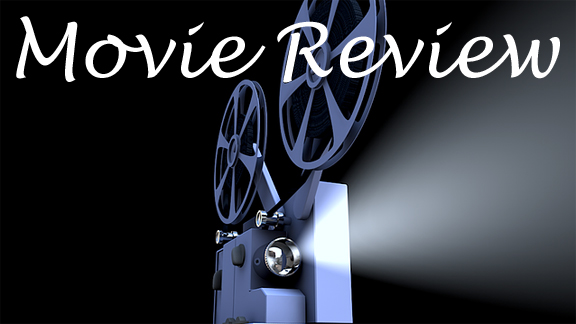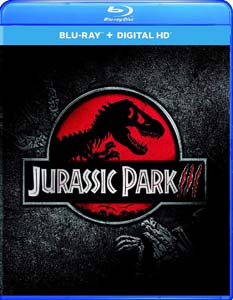“Jurassic Park III” (2001) is a stripped down B-movie that has a blast playing with the saga’s tropes, one classic character and dinosaurs old and new. It’s the first movie not based on a novel (although “The Lost World” diverted from the novel, it still had the heft of a novel adaptation) and it didn’t feature a comic book adaptation or a “making of” book (there were toys, though).
Director Steven Spielberg and composer John Williams stepped aside, handing the reins to the capable-but-less-celebrated Joe Johnston and Don Davis, respectively.
Not a full meal
“Jurassic Park III” does a lot of things right and a lot of things wrong. I’d rate the overall package as a tasty snack, but not a full meal; it’s a full half-hour shorter than the previous entries.

“Jurassic Park III” (2001)
Director: Joe Johnston
Writers: Peter Buchman, Alexander Payne, Jim Taylor
Stars: Sam Neill, William H. Macy, Tea Leoni
The big theme here is communication. On the human side, the Kirby family rediscovers its bond when the mom (Tea Leoni) and dad (William H. Macy) search for their son, who gets abandoned on Isla Sorna after a parasailing mishap. Of more interest to fans, Alan Grant realizes that while he owes a lot of his career success to Ellie, he never told her that. She has married another man, but at least Alan learns to show appreciation for his young assistant, Billy.
It’s great to have Sam Neill back as Grant. The first movie’s line “Who better to get the children through Jurassic Park than a dinosaur expert?” proves true again, as the paleontologist is a much more appropriate lead than chaotician Ian Malcolm was in “The Lost World.” Still, “JP III” is primarily a rescue mission.
Grant and Billy have emotional and scientific interest in the dinosaurs, but the film’s fast pacing makes it clear they won’t have time to study dinosaurs the way “The Lost World’s” gang did. The rest of the characters are a mixed bag: Although the Kirbys’ ignorance of Isla Sorna’s dangers is annoying at first, it’s hard to be too critical of people who want to rescue their son.
Talking with raptors
Surprisingly, two of the three “JP III” writers are Alexander Payne and Jim Taylor (Peter Buchman is the third), the men responsible for masterpieces like “Election,” “Sideways” and “The Descendants.” It’s incredible to think that they had anything to do with this movie’s comparatively shallow character arcs.
The writers try to add thematic heft with an exploration of raptor communication, but despite Grant’s intriguing tease that raptors would have evolved into the dominant lifeform if not for the asteroid, the punchline lands flat. Surrounded by raptors, Grant blows through a 3D-printed raptor vocal chamber and the animals depart – it’s not at all clear why, and I’m left with the feeling that the humans escaped due to dumb luck. I guess the raptors were 1) focused on retrieving their eggs and 2) weren’t hungry.

While a lot of critics rip this film for Leoni’s flat performance or the drama with the satellite phone or Grant seeing a talking raptor in a dream on the plane ride or Ellie’s inexplicable ability to call upon the U.S. Army and Navy, it’s the final standoff that bothers me most, both for being nonsensical and for taming these raptors that were the stuff of kids’ nightmares two films ago.
New dinos, but fewer scares
Although “JP III” doesn’t effectively say anything new about dinosaurs, it does a great job of showing us new dinosaurs. The first new star is the spinosaurus, which kills a T-rex in an epic battle a half hour into the film – a point at which “Jurassic Park” and “The Lost World” were still in the build-up stages.
“JP III” is less scary and intense than the first two. Still, it has some creepy moments. I love the shot of the massive spinosaurus staring down the group after they realize none of them has the sat phone — it’s in the beast’s stomach.
The second new star is the pteranodon (or a group thereof), which is introduced when it creepily walks out of the mist along an aviary catwalk. I criticized the end of “The Lost World” for showing some of these flying carnivores out in the open (suggesting they could fly to the mainland and cause havoc) as John Hammond speaks about the beauty of free-roaming dinosaurs and Williams’ theme soars.
“JP III” forgets about that shot and has all the pteranodons in the aviary until the humans accidentally leave a door open, allowing them to escape and for this movie to essentially repeat “The Lost World’s” ridiculous final shot. Viewing the flying beasts from the window of the rescue helicopter, Grant notes that the pteranodons – which tried to kill all of them, and only failed due to script conveniences (how the hell did Billy escape being pecked to death?) — are searching for a new nesting ground. Grant is far too blasé about this threat to humanity.
Isla Sorna has different feel
Also peppered into the film – if not so much the story – are ankylosaurus (seen at the river’s edge) and ceratosaurus (which for some reason merely looks at the humans rather than attacking them). Although it’s not shown on screen, the boaters in the teaser sequence might’ve been killed by ocean-going dinos (hey, it makes as much sense as any other theory), which would mark their debut in the saga.
And the velociraptors are redesigned with longer skulls and feathery crests, reflecting new paleontological knowledge since the previous film — although not making much sense in the continuity of the movies.
Speaking of continuity, it’s odd to think that the ravenous spinosaurus was on the same island during “The Lost World,” but the “moveable feast,” as Roland calls the human caravan, doesn’t attract it. I guess we can just chalk it up to Isla Sorna being a big island.
Still, I do wish “JP III’s” Isla Sorna felt more like “Lost World’s.” It doesn’t seem like the same place at all, due to the switch from dark/gritty to crisp/straightforward cinematography and the fact that we don’t visit any of the same locales.
“JP III’s” embryo facility looks sort of like the communications center in “Lost World” – for a brief moment I thought Grant was looking at the smashed-up Jeep where Malcolm was trapped by a raptor – but it isn’t the same building. In another miscalculation, Davis draws more on the “Jurassic Park” score than “Lost World’s.”
For all of these reasons, “JP III” has to rank as the weakest of the trilogy. IMDB voters agree, as the third entry rates a 5.9, behind the 8.0 and 6.5 of the first two. On the other hand, it’s by no means an embarrassment to the saga.
While not as ambitious as its predecessors, it serves up tasty new dinosaurs and action sequences while bringing back a beloved character and staying true to the saga’s ideas, even if it doesn’t do much to expand them.
Click here to visit our “Jurassic Park” Zone.
Click here to visit our Michael Crichton Zone.
Comments
Hey bro, I’m enjoying your blog thank you for writing out all your thoughts. My take on why the raptors left Grant and the kids alone: he blew through the 3D printed voice box the raptor call for help. The raptors looked uncertainly at each other then looked up when the helicopter can be heard coming in. The raptors talk among themselves and realize the humans have called reinforcements. So they grab the eggs and leave before they are outnumbered. Cheers.# Posted By Alan | 7/26/17 8:06 PM
That makes sense. Thanks for reading!# Posted By John Hansen | 7/26/17 10:17 PM

